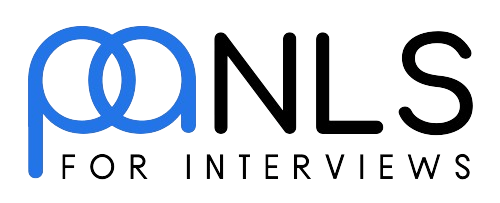Mastering the Selection Process: 10 Proven Steps to Hire Top Talent Efficiently

Hiring the right candidate starts with one critical element — a well-structured selection process. Without it, organizations face mis-hires, wasted resources, and employee disengagement. In this comprehensive guide, we’ll walk you through a 10-step selection process designed to ensure you’re consistently hiring top talent — with efficiency, accuracy, and confidence.
A poor hire can cost your company up to 200% of that employee’s annual salary. Beyond monetary losses, a disorganized selection process can harm team productivity, culture, and customer satisfaction. To avoid these consequences, businesses need a modern, strategic approach to hiring. This article will explore what the selection process is, why it matters, and how to do it right with proven methods and expert-backed practices.
What Is the Selection Process in Hiring?
The selection process refers to the sequence of steps a company follows to evaluate and choose the best candidate for a job. It typically begins after applications are collected during the recruitment phase and continues until a final hiring decision is made. While recruitment is about attracting candidates, the selection process is about choosing the most qualified person from that group.
A simple analogy would be building a sports team: recruitment gathers everyone interested in playing, while the selection process filters out those who won’t perform well in real competition. In the hiring world, this involves multiple evaluations, interview formats, and background checks to ensure the right match.
The Recruitment process ensures that organizations assess candidates based on relevant criteria, minimize bias, and avoid making rushed or emotional decisions.
Why a Strategic Selection Process Matters
An effective selection process does more than just help fill open roles—it protects your company from costly hiring mistakes. Every step, from job description to final offer, plays a role in ensuring your new hire will thrive and contribute to long-term success.
Here’s why having a structured and strategic selection process is non-negotiable:
- It enhances productivity by hiring the right person with the right skills.
- It reduces turnover, which saves time and money on rehiring and retraining.
- It ensures culture alignment, helping build stronger, more cohesive teams.
- It supports legal and ethical compliance, reducing the risk of bias claims.
- It strengthens your employer brand by creating a positive candidate experience.
Businesses looking to hire specialized roles, like technical recruiters or backend developers, must apply targeted techniques to evaluate talent accurately. This includes using tools that assess backend developer skills and conducting technical assessments relevant to the job.
10 Essential Steps in the Selection Process
1. Job Description & Role Definition
The selection process begins before you even post the job. A clear, accurate, and well-thought-out job description lays the foundation for every hiring step that follows.
Important points to define:
- Key responsibilities and daily tasks
- Required technical skills and soft skills
- Educational qualifications and experience
- Desirable but non-essential attributes
- KPIs or success metrics for the role
A strong job description ensures that everyone involved in the selection process is aligned on what the role truly requires.
2. Job Posting & Sourcing Channels
Where and how you promote the job plays a big role in the type of applicants you attract. A poorly distributed or generic job post can attract unqualified candidates or discourage diverse applicants from applying.
Key strategies for better job posting:
- Use multiple platforms (LinkedIn, Indeed, niche job boards)
- Write inclusive, bias-free descriptions using tools like Textio
- Optimize for mobile accessibility to improve application rates
- Leverage employee referrals and internal talent mobility
The right sourcing strategy will fill your talent pipeline with better-quality candidates, reducing time and effort in the later stages of the selection process.
3. Application Review & Screening
Once applications start pouring in, the next step is filtering the right candidates for further evaluation. This screening stage often determines how effective and fair your selection process will be.
Options to consider:
- Manual review by recruiters or hiring managers
- Automated tools to scan resumes and identify keyword matches
- AI-based platforms like BarRaiser that score candidates based on criteria
- Standardized screening templates to evaluate qualifications consistently
Efficient screening can help eliminate unqualified applicants while ensuring promising candidates don’t slip through the cracks.
4. Pre-Screening Interviews
Pre-screening is a short initial interaction to ensure the candidate meets basic requirements and is genuinely interested in the role. It also helps clarify any gaps in the resume.
These can be conducted via:
- Phone calls
- Video chats
- AI chatbots for high-volume roles
During this step, focus on logistical fit, such as availability, salary expectations, communication skills, and work eligibility. It’s also a great opportunity to gauge motivation and alignment with your company’s mission before advancing to formal interviews.
5. Assessments & Skills Testing
This stage helps objectively evaluate whether a candidate can actually do the job. Assessments should be relevant to the role and measurable.
Assessment types include:
- Role-specific assignments or work samples
- Problem-solving or analytical tests
- Cognitive or aptitude tests
- Tools like TestGorilla or HackerRank for technical evaluations
Data from these tests adds objectivity to the selection process and minimizes the impact of unconscious bias in later stages.
6. Structured Interviews
Unlike informal or unstructured interviews, structured interviews use a fixed set of questions and scoring systems to evaluate candidates on consistent criteria.
Best practices:
- Use the STAR method (Situation, Task, Action, Result)
- Ask behavior-based and situational questions
- Create a scoring rubric before the interview begins
- Avoid asking irrelevant or personal questions
Structured interviews are proven to be more predictive of future performance than other types and bring fairness to the selection process.
7. Background & Reference Checks
Once a candidate clears the interviews and assessments, verifying their background is a critical step. This protects your organization from potential risks and confirms the accuracy of the information provided.
Essential checks include:
- Employment history and job titles
- Educational qualifications
- Professional references
- Criminal and credit checks (if relevant)
- Compliance with FCRA and EEOC regulations
This step should be handled with confidentiality and professionalism to maintain the candidate’s trust.
8. Cultural & Team Fit Evaluation
Skills alone don’t determine success. A candidate’s ability to integrate into your team and align with your company values is equally important.
Ways to assess culture fit:
- Involve future teammates in casual or peer interviews
- Ask questions related to company values and conflict resolution
- Observe communication and interpersonal style
- Use real scenarios to see how they approach problems
This is often the difference between a high-performing hire and one who struggles to adapt.
9. Final Decision-Making
At this point, all relevant information from the selection process should be gathered and compared systematically. The decision to hire should be based on a well-rounded view.
Tips for making the final choice:
- Use candidate scorecards with numerical ratings
- Include feedback from multiple interviewers
- Revisit assessment results and reference comments
- Avoid snap decisions or personal bias
Collaborative, data-driven decision-making ensures fairness and reduces hiring regret.
10. Job Offer & Onboarding Preparation
The final step in the selection process is extending a job offer and preparing the candidate to succeed from day one. This should be timely and clearly communicated.
Include in your job offer:
- Role and title
- Start date and salary
- Benefits and bonuses
- Reporting structure
- Onboarding schedule
A smooth onboarding process reinforces your employer brand and ensures your new hire begins their journey with enthusiasm and clarity.
Key Metrics to Measure the Selection Process
To refine and improve your selection process over time, track the following metrics:
- Time to fill: How many days it takes to close a role
- Quality of hire: Performance and retention rates of new hires
- Candidate Net Promoter Score (CNPS): Candidate satisfaction feedback
- 90-day attrition: Percentage of new hires who leave within 3 months
Measuring these indicators ensures you’re building a selection process that is both efficient and effective.
Common Pitfalls in the Selection Process
Even experienced hiring teams can fall into common traps. Avoid these mistakes to maintain a high-quality process:
- Making decisions based on intuition or gut feeling
- Conducting unstructured, inconsistent interviews
- Skipping reference checks due to time pressure
- Letting too much time pass between interview stages
- Failing to communicate updates to candidates
A consistent and well-documented selection process protects both your business and your employer brand.
Best Practices to Improve Your Hiring Selection Process
Here are some proven ways to improve the results of your selection process:
- Train hiring managers and interviewers in structured interviewing
- Use inclusive and clear language in all job postings
- Standardize each selection stage to reduce bias
- Collect candidate feedback after every hiring cycle
- Continuously review and refine your metrics and tools
Following these steps helps ensure your selection process evolves with your business needs and candidate expectations.
Automate and Scale Interviews with Panls.ai
Manual hiring processes are slow, inconsistent, and often riddled with bias. That’s where Panls.ai steps in. As an Interview-as-a-Service (IAAS) platform, it enables companies to scale their selection process without compromising quality.
Key benefits of Panls.ai:
- Reduces hiring time by up to 50%
- Outsources technical interviews to vetted industry experts
- Matches interviewers to your specific job descriptions
- Automates interview scheduling and candidate coordination
For growing teams or fast-scaling startups, Panls.ai is an essential tool to modernize your selection process and focus on making great hires — not managing calendars.
Visit Panls.ai to book a free demo and streamline your selection process today.
Conclusion
A well-planned and structured selection process isn’t just about filling jobs—it’s about building a better business. By following these 10 essential steps, avoiding common pitfalls, and leveraging tools like Panls.ai, you can significantly improve the quality, speed, and fairness of your hiring process.
Investing in the right selection process today sets your team up for success tomorrow.
Frequently Asked Questions
The selection process in hiring is a structured set of steps that companies use to evaluate and choose the most qualified candidate for a job role, usually following the recruitment phase.
A structured selection process ensures fairness, consistency, and better decision-making. It reduces hiring risks and improves retention and candidate experience.
Ideally, the selection process should take between 2 to 4 weeks. However, it depends on the role, industry, and number of interview stages involved.
Common steps include job posting, resume screening, assessments, interviews, background checks, cultural fit evaluation, and final decision-making.
Technology can automate resume screening, assessments, and interview scheduling, helping to reduce human error and accelerate decision-making.
Recruitment is about attracting a pool of candidates, while the selection process is about evaluating and choosing the most suitable one.
Cultural fit can be assessed by involving team members in interviews, asking values-based questions, and using real-life scenarios to understand the candidate’s alignment.
Common mistakes include relying on gut feeling, skipping reference checks, conducting unstructured interviews, and not providing timely feedback to candidates.
